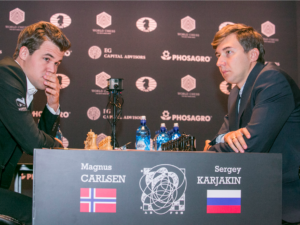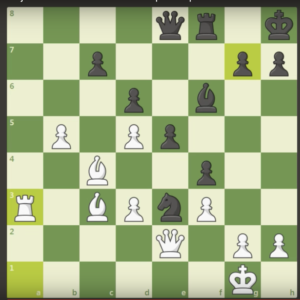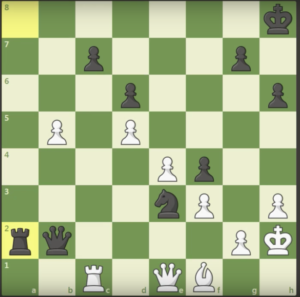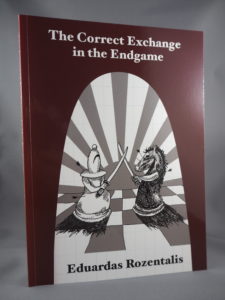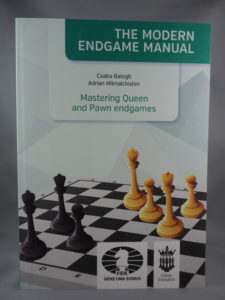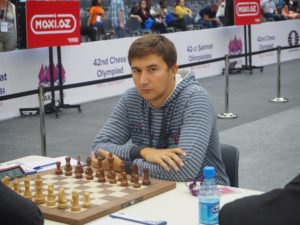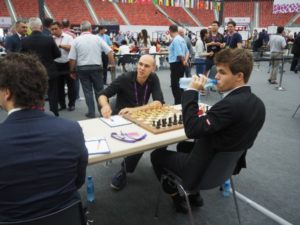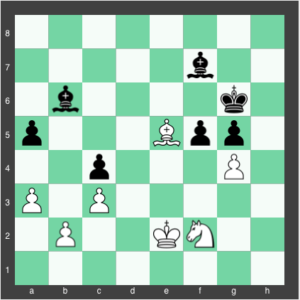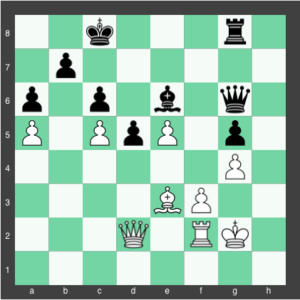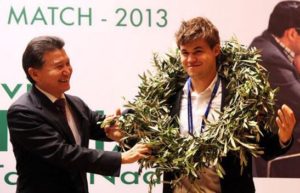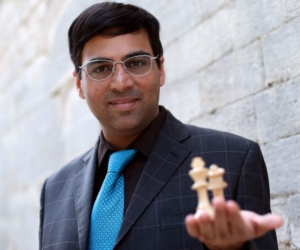Picking up where we left off in our last blog on the 2016 World Chess Championship, the draws continued in rounds nine, eleven and twelve, leaving the players dead even after the specified twelve classical (long) games of chess.
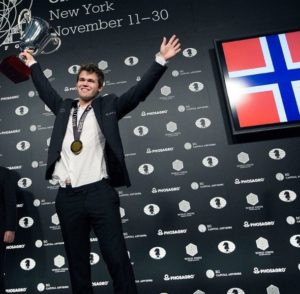
The only decisive result came in round ten when Magnus Carlsen was able to level the scores once again in a slow maneuvering game (you can read about here).
After an uninspiring final game, lasting only 35 moves which is short for a Grandmaster game, it seemed as if the reigning champion Magnus Carlsen was deliberately opting for a draw in order to play for a win in the tie break. His not-so-subtle comments in the press conference after the game led many to believe that the Blitz Champion would feel more comfortable in the shorter game format.

After far from perfect play from both contenders, spectators were happy to be seeing only the third tie break in World Chess Championship history.
With both players having a strong record in 25 minute games, the contest was sure to be tight, but Magnus Carlsen took an early lead in game two of four, coming into the endgame with two minor pieces against Sergey Karjakin’s rook.
As International Master Danny Rensch from Chess.com said, the position favours the player with the minor pieces in this particular case because both players’ pawns are on one side of the board, meaning that the rook would be unable to demonstrate its long range prowess. The absence of passed pawns meant there was nothing for the Russian player’s rook to attack.
However, despite these advantages Magnus Carlsen was unable to produce a win. A disappointing game for his supporters, but just another demonstration of Karjakin’s stalwart defensive style.
Game three saw the players enter another Spanish opening, however in the position below it’s clear that Karjakin is struggling, this time with the two bishops trapped behind their pawns making them completely useless. Here Carlsen played the inspiring move pawn to e4, sacrificing the one-point piece to strengthen the rest of his pieces and even take control of the a-file and the board as a whole.
Only a few moves later, under severe pressure in the following position, Karjakin blundered as white by taking the pawn on c7, allowing a devastating skewer with rook to a1, winning a piece and, shortly after, the game (had Karjakin not immediately resigned).
Desperate to stay in the running, Karjakin went into game four with his traditional Sicilian opening, however couldn’t get anything worth having against Magnus Carlsen’s solid response.
Despite an interesting attempt to mix things up Karjakin ended up worse and slowly but surely lost the final game of the match ending in an incredible queen sacrifice by the Norwegian champion.
And suddenly, that was it for another year of World Championship chess!
All in all, an exciting match was enjoyed by what organizer Agon has hinted was a record number of chess fans. Poor form by Carlsen and some smart play by Karjakin led to what was certainly an unexpectedly close contest, sure to keep chess as one of the most watched online sports.
